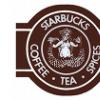Old Starbucks logo. History of Starbucks
In March, two global companies - coffee chain Starbucks and food manufacturer Kraft Foods - experienced significant changes. The first has entered two new categories for itself, and the second has introduced a new name for its global business. Change is an important step for any brand. Often, logos can tell a lot about the development of a company, so we decided to trace the history of Starbucks and Kraft Foods through them.
Starbucks
The Starbucks story began in 1971, when two teachers and one writer chipped in $1,300 each to open a coffee bean shop in a shopping mall in Seattle, Washington. The friends decided to name their store in honor of one of Starbuck's characters in the cult American novel Moby Dick. Since Starbuck was an assistant on the ship, the creators decided to keep the theme of the sea. Therefore, the image of the two-tailed mermaid Siren, a sea creature from ancient Greek mythology, was chosen for the logo. An engraving from a 16th-century book was used, in which the Siren is depicted half-naked.
True, the designer made several changes - he made Sirena's smile wider and removed the navel. The first Starbucks logo in 1971 was shaped like a cigar strip. The main color of the logo was brown.

In 1987, green and stars appeared on the logo.

In 1992, the logo focused on the Siren's face - the lower part of the mermaid's body was removed. The brown color has been pushed out.

In 2011, Starbucks decided to radically change the twenty-year-old logo. “Siren has represented coffee for forty years, and now she is a self-sufficient star,” the company said. Therefore, it was decided to remove everything from the logo, except for the mythological creature. The green bezel with the company name and stars has disappeared, the color of the logo has become lighter. According to Starbucks, this is a more expressive and expressive logo, which at the same time retains the most important thing - the image of the Siren and the green circle.

Starbucks expanded beyond the US market in 1996 by opening locations in Japan and Singapore. Growing out of a supermarket coffee shop, the worldwide coffee shop chain now has a profit of $945 million (2010). Starbucks continues to develop new markets - now the company has begun to produce juices and energy drinks.
Kraft Foods
Kraft Foods was founded in 1903 by James Kraft (originally J.L. Kraft & Bros). He was the company's president from 1909 to 1953. Over the course of its history, Kraft Foods has changed not only the name, but also the logo. Here are the most significant changes.
Until 2009, the company logo looked like this.

In February 2009, the Nitro advertising agency developed a new corporate logo, adding a smile element to the identity. The logo also featured a firework of 7 colorful spots, each representing a specific line of business for Kraft Foods. In addition, the corporation introduced a new slogan - Make today delicious (Make today delicious).

Five months later, the logo was changed again, with the focus shifted from the smile to the colorful petals.

Kraft Foods is one of the largest food manufacturing companies in the world. In 2011, the company's annual sales were $54.4 billion. On August 4, 2011, Kraft Foods announced its plans to split and form two independent public companies, and last week unveiled a new name for the global business.
Kraft Foods has been on the Russian market for 17 years, the company's investments in the Russian economy have already exceeded $800 million. Kraft Foods Rus produces goods under such brands as Carte Noire, Jacobs, Maxwell House, Alpen Gold, Vozdushny, Milka, Wonderful Evening, Anniversary, Prichuda, Alpen Gold Chocolife, Barney, Tornado, TUC and Estrella.
In February 2010, Kraft Foods acquired Cadbury globally. The key brands of Dirol Cadbury on the Russian market are Dirol, Stimorol, Malabar chewing gum, Halls and Dirol Drops, Cadbury, Tempo and Picnic chocolate. Kraft Foods owns 5 factories in Russia.
The largest chain of coffee shops Starbucks is considered to be one of the symbols of America. Today, one in five cups of coffee is consumed at Starbucks in the US, but Howard Schultz, the company's owner and inspirer, has worked hard to instill in Americans a love for this gourmet drink.
The story of three coffee lovers
In 1971, English teacher Jerry Baldwin, history teacher Zev Siegl, and author Gordon Bowker put together $1,350, borrowed another $5,000, and opened a sales store in Seattle, Washington. When choosing a name for the store, the name of the whaling ship from Herman Melville's novel Moby Dick, Pequod, was first considered, but in the end it was rejected, and the name of Ahab's first mate Starbuck was chosen. The logo was a stylized image of a siren.
The partners learned the correct selection of varieties and roasting of coffee beans from Alfred Peet, the owner of Peet’s Coffee. Starbucks bought beans from Peet's Coffee for the first 9 months of operation, and then the partners installed their own roaster and opened a second store.
By 1981, there were 5 stores, a small coffee roasting factory and a trading division that supplied coffee beans to bars, cafes, and restaurants.
In 1979, the owners of Starbucks bought Peet's Coffee.
The opening of the store fell on a difficult period: in the late 60s, Americans were completely disappointed in instant coffee, and most of them simply did not know that there was any other coffee besides instant coffee. Therefore, there really were not many buyers.
Romantic Howard Schultz
Howard Schultz has become one of Starbucks' truest followers. After trying Starbucks coffee, he immediately fell in love with it, because this coffee had nothing to do with what he had tried before.
Schultz later recalled: “I went out into the street, whispering to myself: “My God, what a wonderful company, what a wonderful city. I want to be a part of them."
Leaving his post as CEO of the New York division of Perstorp AB, a tableware manufacturer, Howard Schultz joined Starbucks.
He directed all his efforts to the development of a new company, but the business did not go as well as he wanted. In total, Starbucks only had a few thousand repeat customers.
1984 was a turning point in the history of the company. Once in Italy, Schultz discovered a whole new culture of coffee consumption. Unlike the Americans, the Italians did not drink coffee at home, but in cozy coffee houses.
The idea of drinking coffee outside the home literally inspired Schultz.
He suggested that the owners of Starbucks open a coffee shop, but the proposal did not find support. Management was of the opinion that real coffee should be made at home.
But nothing could stop Schulz, and in 1985 he founded his own coffee shop II Gionale. Things went so well that after 2 years he bought Starbucks from its founders for $4 million.

Bar counters appeared in all the company's stores, where professional baristas (coffee brewers) ground coffee beans, brewed and served aromatic coffee.
The baristas knew all the regular customers by name and remembered their tastes and preferences. But even such impeccable service could not overcome the conservatism of the Americans: they were still not ready to drink real bitter coffee.
Then Howard Schultz decided to make light roasted coffee, which is lighter and more familiar to the average American. And this brought success to his business: America was filled with love for this coffee.
Starbucks coffee houses received more and more visitors, and coffee sales in stores remained at the same level. So the main business of the company turned into an accompanying one.
Venue
The popularity of Starbucks inspired not only consumers, but also competitors. Similar coffee shops began to open everywhere, but with lower prices. Even fast food restaurants and gas stations have advertised "Espresso" to entice customers.

Starbucks is redefining the coffee shop format in line with its stated benefits, making it the best place to socialize.
The area of establishments has increased tenfold, and high bar stools at the counter have been replaced by cozy tables. With the ability to sit apart from other patrons, Americans began making appointments at Starbucks.
Howard Schultz wanted his chain of coffee shops not only to sell coffee, but to have a special atmosphere, becoming the third place between work and home.
In America, Starbucks has become the epitome of democratic coffee shops for a new generation of educated and tasteful patrons.
Howard Schultz emphasized that his business was not to fill stomachs, but to fill souls. This is the secret to Starbucks success.
Uncompromising quality
The popularity of Starbucks continued to grow, but the company found it increasingly difficult to combine a wide range and high quality products.
The fact is that grains were delivered to Starbucks in special packaging - two-kilogram bags. As long as such a package was closed, the coffee retained its original freshness, while an open package had to be used within 7 days. For rare and expensive coffees, this was unacceptable.
Starbucks found a way out here too. The company created its own technology for obtaining powdered coffee and as a result developed instant coffee that is as close to natural as possible. The quality of the coffee was not affected, and the issue of costs was successfully resolved.
In the 90s, America was already overwhelmed by real coffee mania and obsession with Starbucks. The company grew at a frantic pace - up to 5 new coffee houses were opened daily. By the end of the 1990s, Starbucks had over 2,000 locations and was gaining recognition in Japan and Europe.
At the same time, in California, the richest and most populous state in the United States, the idea of healthy eating is gaining momentum. Californians began to count every calorie and decided that drinks made with full-fat whole milk were unhealthy.

At first, Starbucks resisted the trend, fearing that skimmed milk would not retain the same taste of coffee.
Diet coffee wasn't marketed until the company began to lose customers. This is how drinks appeared on the menu, devoid of the taste of real coffee, but satisfying the tastes of consumers who care about their health.
The Starbucks business was running like clockwork, and in 2000 Howard Schultz decided to move away from the direct management of the company to pursue new business projects.
By 2005, Starbucks had grown into a global chain with over 8,300 coffee shops. In 2007, 15,700 Starbucks coffee shops were opened in 43 countries around the world. The company's revenues for 2007 amounted to $9.4 billion.
Such was Starbucks' notoriety that The Economist introduced the Starbucks Index, similar to the popular BigMack Index.
This index is an indicator of the economic situation in the country and is determined by the price of a standard cup of coffee in a Starbucks coffee shop.
Return of the leader
In 2007, the situation at Starbucks began to seriously worry Howard Schultz: coffee shop patrons complained of "the loss of the spirit of romance." Schultz knew perfectly well what was the matter, and repeatedly drew the attention of top managers of the company to the fact that:
- new coffee brewing machines were higher than the old ones, and this did not allow customers to follow the process of preparing a drink;
- the new packages kept the beans well, but deprived the coffee shops of the delicate aroma that is so attractive to coffee connoisseurs.
In early 2008, Howard Schultz returned to management to restore the company's image. The economic crisis also made additional adjustments: optimizing costs, the company closed 600 coffee houses in 2008 and another 300 in 2009.
Now all the efforts of the company are aimed at overcoming the consequences of the crisis and improving service. Starbucks is also actively helping its customers in this by posting their reviews and suggestions on the website.
The logo of the company was the image of a siren with bare chest and navel. The image of a siren symbolizes that Starbucks coffee is delivered from far corners of the world. The original Starbucks logo (pictured below) can still be seen on the first store in Seattle.

It was Bill Gates, the founder of Microsoft and one of the company's first investors, who advised Schultz to merge coffee shops and stores under the same Starbucks name.
Starbucks coffee shop locations always meet the following requirement: the front door faces east or south, never north. Visitors should enjoy daylight, but it should not interfere with them.
The music that plays in Starbucks coffee shops covers its entire network: the composition that you hear in New York is playing in Seattle at the same minute. At the same time, each coffee shop has a unique interior design and atmosphere.
A year ago, Starbucks joined the Anti-AIDS Foundation's (PRODUCT) RED™ program and is donating a percentage of its profits to research and cure the virus in Africa.
During the year, the company collected donations, which will be enough for 7 million days of medical support for HIV-infected people in Africa.
Quotes by Howard Schultz
“We just didn't know it couldn't be done, so we did it.”
“We believe that business should mean something. It must be based on some original product that exceeds the client's expectations.”
“Coffee without people is a theoretical concept. People without coffee are also neither.”
“If we consider a butterfly, based on the laws of aerodynamics, it should not be able to fly. But the butterfly does not know this, and therefore it flies.”
“Dreaming is one thing, but when the moment is right, you have to be ready to leave your life and start searching for your own sound.”
“If you say you never had a chance, maybe you just didn't take it.”

owner of the Starbucks coffee chain.
Starbucks has always been and remains the company where you will always find the best coffee brands in the world.
is the largest chain of coffee shops in the world. It is believed that for Americans, the brainchild of Howard Schultz is the "third place", between home and work. Over the past few decades, Starbucks has become one of the symbols of America, not inferior in its popularity to McDonald's. In addition, the company began overseas expansion. With varied success. Where the Starbucks chain has become popular, as in the USA, but somewhere it has not taken root at all (for example, only a few coffee shops of the company are open in Austria, and expansion is not planned). And the history of Starbucks began back in 1971 in Seattle ...
Start
In 1971, English teacher Jerry Baldwin, history teacher Zev Siegl, and author Gordon Bowker put together $1,350, borrowed another $5,000, and opened a coffee bean shop in Seattle, Washington. The store was named after a character in Herman Melville's Moby Dick; the logo has a stylized image of a siren.
During the first year of operation, Starbucks' main supplier was Alfred Pitou, a man whom the founders knew personally. However, such cooperation came at a price, and therefore the owners of Starbucks decided to partner with coffee suppliers directly in order to reduce their costs.

The name "Starbucks" itself comes from the name of one of the characters in Herman Melville's famous novel "Moby Dick" (in the Russian edition of the character's name was Starbuck). The first logo of the company was the image of a bare-chested siren. It was done in brown, and the siren was used to emphasize that fact.
that the coffee at Starbucks comes from a distant land. I must say that the logo was quite controversial. Through the siren's bare chest.
Later, it was covered with hair, and the logo itself was slightly cut off. In addition, it changed its color from brown to green (however, a new brown logo of the company is currently being tested. If it is successful, the coffee chain will soon return to its roots in a sense). It is worth noting that the original Starbucks logo can still be seen on the first store in Seattle.
When Howard Schultz joined Starbucks in the early 1980s, she already had a reputation as a well-known roaster and respected local seller of coffee (ground and beans). During a business trip to Italy, Howard was introduced to the rich tradition of espresso making. It was espresso that formed the basis of Schulz's new concept. In 1987, with the support of local investors, he purchased Starbucks. Currently, the company sells coffee, tea and treats not only in its own stores, but also supplies them to other retail chains.
The situation really changed after Howard Schultz visited Milan. There he saw the famous Italian coffee houses. However, the idea of selling ready-made coffee in cups did not find support among the founders of the company. They believed that with this approach, their store would lose its essence and distract consumers from the main thing. They were people with traditions. And they believed that real coffee should be prepared at home.
However, Schultz was so confident in his idea that he left Starbucks and founded his own coffee shop II Gionale. The coffee shop opened its doors in 1985. And two years later, Schultz buys Starbucks from the founders for $ 4 million and renames his company (it is interesting that Schultz was advised to make such a move by Microsoft founder Bill Gates, who was one of the first investors in Starbucks). Like the McDonald brothers once upon a time, the three Seattle coffee drinkers left their own business for a hefty payoff. And businessman Schultz got free rein. 
That same year, the first Starbucks opened outside of Seattle. Coffee houses were opened in Vancouver, British Columbia and Chicago. In 7 years, the year the company goes public, it will have 165 coffee shops across America. And three years later, the first Starbucks coffee shop outside the United States was opened - in Tokyo. At the same time, about 30% of all coffee houses of the company today are its property. The rest are distributed by franchising.
Contribution by Howard Schultz
Howard Schultz grew up in a poor family. True, his childhood cannot be called completely poor. No, his parents worked hard, but they never could afford frills. Schultz's dream at the beginning of the Starbucks journey was to have a coffee shop in every state. So that Starbucks is on every corner. In addition, Howard Schultz wanted his chain of coffee shops not only to sell coffee, but also to have a magical atmosphere. The businessman wanted Starbucks to be the third place for people. A place between home and work. And I must say that he realized his dream.
Most people who have worked with Howard Schultz note his ability to quickly respond to circumstances. Schultz always follows the latest trends, knows in advance what the buyer will want in the near future.
One of Howard's main contributions to Starbucks' success is that he brought standardization to the company. In any coffee shop there is the same assortment of basic goods. In whatever country you are, but you can drink your favorite coffee. Of course, Starbucks also presents some special products created for a certain nationality. However, like the same mcdonald's.
Espresso, hot chocolate, Frappuccinos, various syrups, seasonal coffees, teas and more - all this is the Starbucks assortment. For coffee, you can order a cake or a sandwich. However, unlike most other cafes at Starbucks, the emphasis is on coffee. People come here to drink this drink, and not to eat "cake with coffee." In general, in America, Starbucks coffee is drunk in different ways. Someone enjoys the amazing atmosphere of a coffee shop, while someone buys a drink and drinks it on the go, on the way to work, for example. Fortunately, plastic cups allow you to do this with comfort.
If we talk about the standardization that Schultz introduced in the company, then it stands out for one more thing - the atmosphere in the cafe. On the one hand, the main elements in all Starbucks establishments are similar, but on the other hand, each coffee shop has its own characteristics, its own unique atmosphere. And this is largely the merit of Howard Schultz and the company's design team.
Over the past decades, Starbucks has been buying up local chains of coffee shops around the world, making them part of its brand. The expansion of the company has been going at a crazy pace lately. Even on The Simpsons, there were a few jokes about Starbucks taking over America. However, now the situation has changed somewhat, and Howard Schultz even announced that Starbucks intends to close about 600 stores in the US this year.
The economic crisis is one of the causes of Starbucks' problems. Still, in this chain of coffee houses, coffee is frankly expensive. In addition, internal problems in the company also contributed to the current situation. Not so long ago, Howard Schultz announced that he was returning to Starbucks to solve the problems that his company was mired in. Just like Michael Dell. Will he get it? Most likely so. Starbucks is one of America's most beloved brands. And it's worth it.
Starbucks as a place of pilgrimage
Starbucks coffee drinkers are completely different people. Starting from businessmen who drink coffee on the go, and ending with young couples having fun at the table (although it should be noted that these tables are not the best). Freelancers are active at Starbucks, bloggers write their new posts, and podcasters edit sound files. The atmosphere of this coffee shop attracts people with laptops. Luckily there is Wi-Fi. 
Music is constantly playing in the cafe. It is interesting that there is a central server that plays the same music throughout the Starbucks chain. This means that the song that you hear now in New York is playing in Seattle right now. This state of affairs led Howard Schultz to an agreement with another icon of American business - Apple. Any user of the iPhone communicator or iPod Touch player can, having come to Starbucks, instantly buy that the song is currently playing through the iTunes Store.
At the same time, in recent years, Starbucks coffee shops have begun to sell a lot of third-party products. The company believed that by doing so they would make Starbucks something more than an ordinary coffee shop. Did not work out. The company recently announced that they would no longer sell music in cafes. On average, each Starbucks sold one CD per day. Naturally, this decision does not affect the contract with Apple.
How does it work at Starbucks?
I must say that Starbucks is perhaps the only institution of this kind where it is not a shame to work for a young man. This is not mcdonald's. Being a barista is somewhat prestigious. Although this is a rather difficult job that takes a lot of effort. But, according to the company, it is worth a try to experience the amazing atmosphere of Starbucks.
In 2007, 15,700 Starbucks coffee shops were opened in 43 countries, of which approximately 7,500 belong to Starbucks Corporation, and the rest are franchised or licensed. The company is also developing a network of music stores Hear Music.
Starbucks sells organic coffee, espresso-based drinks, various other hot and cold drinks, snacks, coffee beans, and coffee preparation and serving accessories. Through Starbucks Entertainment and the Hear Music brand, the company also distributes books, music collections, and videos. Most of these items are seasonal or designed to be sold in a specific area. Starbucks branded ice cream and coffee are also sold at grocery stores.
The total number of network personnel is 140 thousand people. According to Hoovers, in 2006 the company's revenue amounted to $ 7.8 billion (in 2005 - $ 6370000000), net profit - $ 564 million ($ 494.5 million).
Starbucks in Russia
Starbucks has repeatedly stated its desire to enter the fast-growing Russian market. However, in 2004, the Starbucks trademark was registered by the Russian Starbucks LLC, which is not related to the American corporation. Later, the Chamber of Patent Disputes deprived Starbucks LLC of the rights to the brand on the complaint of the American network.
In September 2007, the first coffee shop of the network was opened in  Russia - in the Mega-Khimki shopping center. After that, a number of coffee houses were opened in Moscow: on the Old Arbat, in the Naberezhnaya Tower office complex and at Sheremetyevo-2 Airport, recently opened at the metro station. Tulskaya in a new shopping center.
Russia - in the Mega-Khimki shopping center. After that, a number of coffee houses were opened in Moscow: on the Old Arbat, in the Naberezhnaya Tower office complex and at Sheremetyevo-2 Airport, recently opened at the metro station. Tulskaya in a new shopping center.
Interesting Facts
One of the main requirements when choosing premises for Starbucks coffee shops is that the front door should face east or south, never north. According to Scott Bedbury, one of the founders of the Starbucks brand, this is because visitors should enjoy daylight, but at the same time the sun should not shine on their faces.
Read more...

Howard Schultz entered the coffee business thirty years ago with only one goal in mind: to strengthen personal relationships between people over a cup of coffee. He is now the CEO of Starbucks. However, the path to the top was not easy. How did Schultz, a guy from a poor working-class family, overcome all difficulties and found the largest chain of coffee shops on Earth?
A little biography
Schultz was born July 19, 1953 in Brooklyn, New York. His family was no different from the rest. In an interview with Bloomberg, he said that he grew up in a neighborhood among poor people. So, as a boy, he plunged into the world of human inequality, experienced poverty at an early age. When Schultz was only 7 years old, his father, a diaper truck driver, injured his leg on a flight. At that time, there was no medical insurance and compensation, so the family was left without a basic income.

In high school, Schultz actively played football and received an athletic scholarship from the university, located in Northern Michigan. Then the young man went to college and finally decided for himself that he would not continue to play football. You had to pay for your studies, so the guy had to go to work. He started as a bartender, and sometimes even was a donor.
After graduating in 1975, Schultz worked for a year at a sports facility in Michigan. He was invited to Xerox, where he gained experience in dealing with clients. He did not last long there and a year later he got a job in a Swedish company associated with household utensils.
It was there that Schultz built his career and became first general manager and then vice president. He managed the sales team in the New York office. It was in this company that he first encountered the Starbucks brand: a large number of drip coffee makers attracted his attention. Interested, Howard decided to visit Seattle, arranging a meeting in advance with the owners of the coffee shop: Gerald Baldwin and Gordon Bowker.

Getting to know Starbucks
A year later, the then 29-year-old Baldwin (founder of Starbucks) finally hired Schultz, offering him the position of director of retail operations and marketing. Then Starbucks had only three stores that sold bulk coffee for home use. The first Starbucks store still exists and is located in the Pike Place market in Seattle.
Fateful trip to Milan
Schultz's fortunes changed dramatically when he was sent to Milan for a show. Walking around the city, the young man drew attention to espresso bars, where the owners knew all their customers by name and served them various coffee drinks, be it cappuccino or latte. Schultz realized that it was personal relationships that would help sell coffee.
In 1985, Howard left Starbucks after his Italian idea was rejected by the founders. He soon decided to start his own company, Il Giornale (Italian for "daily"). Schultz needed to raise over $1.6 million to buy the coffee shop. He was away from Strakbars for a year, trying to open his chain of coffee shops in the Italian way.
In August 1987, Schultz was offered the position of CEO of Starbucks, which already had six stores.

Popularity of Starbucks
America quickly took a liking to this company. In 1992, Starbucks went public on the Nasdaq stock exchange. The company already had 165 open points, the income amounted to $93 million per year. So, by 2000, Starbucks had become a global chain, opened more than 3,500 coffee shops and received $ 2.2 billion in annual revenue. Schultz became one of the most powerful people in America.
Starbucks has not always been at its best, and there have been failures. So, in 2008, Schultz temporarily closed more than a hundred coffee shops in order to teach the bartender how to prepare the perfect espresso.
As part of the reform, Schultz announced that Starbucks was looking to hire former military personnel. Last year, the company confirmed rumors that it would pay for college education for its employees.

During his time at Starbucks, Schultz has always prioritized his employees, whom he refers to as partners. He offers everyone full medical care and insurance, perhaps influenced by the case of his father.
Schultz published an extraordinary book, Pour Your Heart Into It: How Starbucks Built Cup by Cup.
Starbucks continues to grow, now with more than $16 billion in annual sales, so Schultz is wealthy. His net worth is estimated at $3 billion - a true billionaire.
One of the most famous coffee chains in the world is Starbucks. Starbucks Corp. founded relatively recently. This brand appeared on the world coffee market on March 30, 1971. At first, this was a store that sold its own roasted coffee. Three friends - incredible coffee lovers: Jerry Baldwin (Jerry Baldwin), Zev Siegl (Zev Siegl) and Gordon Bowker (Gordon Bowker) opened their small coffee shop in Pike Place Market, in Seattle.
Since at the beginning of their activity, the founders could not boast of a large number of customers, so they gladly devoted a lot of time to each of them, talked about coffee, shared secrets and, so to speak, preached love for this wonderful drink.
For several years this small shop was the only one of its kind. Only ten years later, the number of Starbucks stores reached five. In addition, the company had its own factory, which allowed not only selling coffee in stores, but also being a coffee supplier for many bars, coffee houses, and restaurants.
The turning point in the history of the formation and development of the Starbucks brand came in 1987. It was at this time that Howard Schultz became the owner of the company. Thanks to him, Starbucks is now a chain of 2,000 coffee shops around the world.
Changes are the stages of the formation of Starbucks
After several years as director of retail sales and marketing, Schultz retires from business and starts his own business, becoming the owner of the coffee chain Il Giornale. Some time later, he finds investors and repurchases Starbucks. Combining two related activities into one company, the new alliance and the Starbucks coffee chain under his leadership managed to conquer the whole world.
Despite the fact that the company has changed, the love for coffee and attention to visitors remained the same. At Starbucks, people come to socialize, work or just look at people. This is not accidental, because the atmosphere of communication in coffee houses was created purposefully.


Howard Schultz was always convinced that not only coffee brings people to the company's establishments, but also personal experience. Therefore, all the work of Schulz and his team was aimed precisely at creating the environment necessary for obtaining such an experience. This was facilitated by comfortable sofas, fireplaces, smoothly curved lines of a cafe that create a comfortable space, free internet and much more.
In addition, Howard Schultz has always tried to maintain the company's commitment to high-quality in-house roasted coffee. There were some difficulties associated with this. Since expensive and rare varieties of coffee were supplied in two-kilogram bags, it quickly fizzled out - long before the sale. This forced Starbucks to create its own powdered coffee technology.
Starbucks company logo
Separately, it is worth talking about the logo and the name of the Starbucks company. The name of the company was chosen in accordance with the famous novel "Moby Dick". As for the logo, it originally featured a mermaid and a siren with two tails. This image was found on an old engraving. It symbolizes the marine theme of the company name.
In 1987, the logo was partially changed. The company's logo now combines the Starbucks and Il Giornale logos.



















